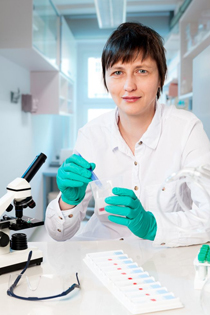HOW IT WORKS
The Registry acts as an intermediary between patients and researchers.
 When you join the Registry, we will ensure that your data is kept safe and secure, and used only by authorized individuals and for approved research projects. We have safeguards, protocols and guidelines in place at multiple levels to protect your privacy and confidentiality. The Registry serves as the go-between for members and researchers, providing an important safeguard to protect patient privacy and confidentiality.
When you join the Registry, we will ensure that your data is kept safe and secure, and used only by authorized individuals and for approved research projects. We have safeguards, protocols and guidelines in place at multiple levels to protect your privacy and confidentiality. The Registry serves as the go-between for members and researchers, providing an important safeguard to protect patient privacy and confidentiality.
The Registry divides data into three types to protect your privacy.
- Personal Profile Information. Personal profile information is data submitted by individual patients and survivors, and is needed to operate the Registry and to directly communicate with its members.
- Research Data. This type of data will directly support research projects. Research data is labeled with codes – not personal identifiers. Researchers will never be given access to personal profile information at any time.
- Research Results. Research projects use research data to conduct studies and produce research results. These research results are submitted into the Registry to support and inform future collaborative research to advance knowledge regarding the detection, treatment, care, and prevention of uterine and endometrial cancer. Just as with research data, research results are labeled with codes – not personal identifiers.
The Registry and authorized Institutional Review Board approved research projects.
Researchers will only be able to access coded research data for projects that are approved first by an authorized Institutional Review Board, and then by the Registry based upon quality, scientific merits, feasibility, and potential for clinical and translational impact. The Institutional Review Board is responsible for reviewing research involving human subjects to ensure that the research is ethical. Using this process, the Registry will support many high-quality investigative studies.
